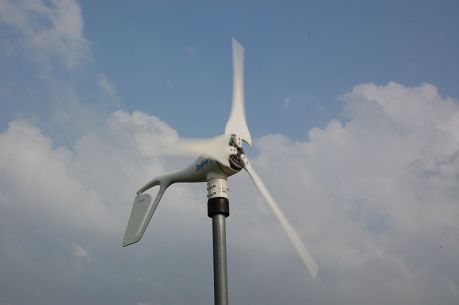Shearography checks wind turbine blades

Wind turbine, fot. public doamin
EU-funded scientists developed an innovative laser optical procedure that allows measurement of material deformation in wind turbine blades.
Wind power is increasingly meeting an expanding proportion of Europe's
energy needs. The wind boom has brought a wide range of wind power
solutions and blade sizes that have put high demands on maintaining wind
turbine integrity and reliability. However, most of the hitherto-used
non-destructive testing techniques proved to be difficult to use for
in situ inspection of complex wind turbine structures with high wind
speeds.
The EU-funded project PHASEMASTER (Advanced spatial phase shifting techniques and applications to non-destructive testing of large engineering components on-site) developed an advanced shearography system and spatial phase-shifting techniques and algorithms to reliably detect defects in situ in large wind turbines.
Shearography uses coherent light from a laser to illuminate the blade surface. The light reflected generates a speckle pattern that is recorded by a digital camera. Other components of the spatial phase-shifting shearography system are a slit aperture, a diffuser, imaging lenses and a prism integrated with a linear polariser. A heating gun excites the blade specimens.
Scientists successfully developed a number of methods and algorithms for removing noise from the speckle shearography pattern. In addition, they developed algorithms for phase extraction from a single as well as multiple fringe patterns.
For the first case, the team calculated fringe orientation by the optical flow from two successive shearograms and then determined the shearogram phase by spiral phase transform. Algorithms based on a least-square iterative procedure as well as post-processing technique based on principal components analysis were developed to extract the phase from randomly phase-shifted fringes. Furthermore, the team successfully demonstrated new phase-compensation algorithms for addressing motion in large rigid bodies.
The innovative spatial phase-shifting shearography system successfully identified subsurface defects in composite structures. Furthermore, it successfully detected weak defect signals by looking at the dynamic fringe pattern of the extracted video of shearograms. For smaller defects, the temporal phase-shifting system was found to provide more reliable results by analysing the video of speckle images.
PHASEMASTER's innovative optical techniques should prompt other industrial sectors to improve reliability and integrity of engineering components.
published: 2015-09-28